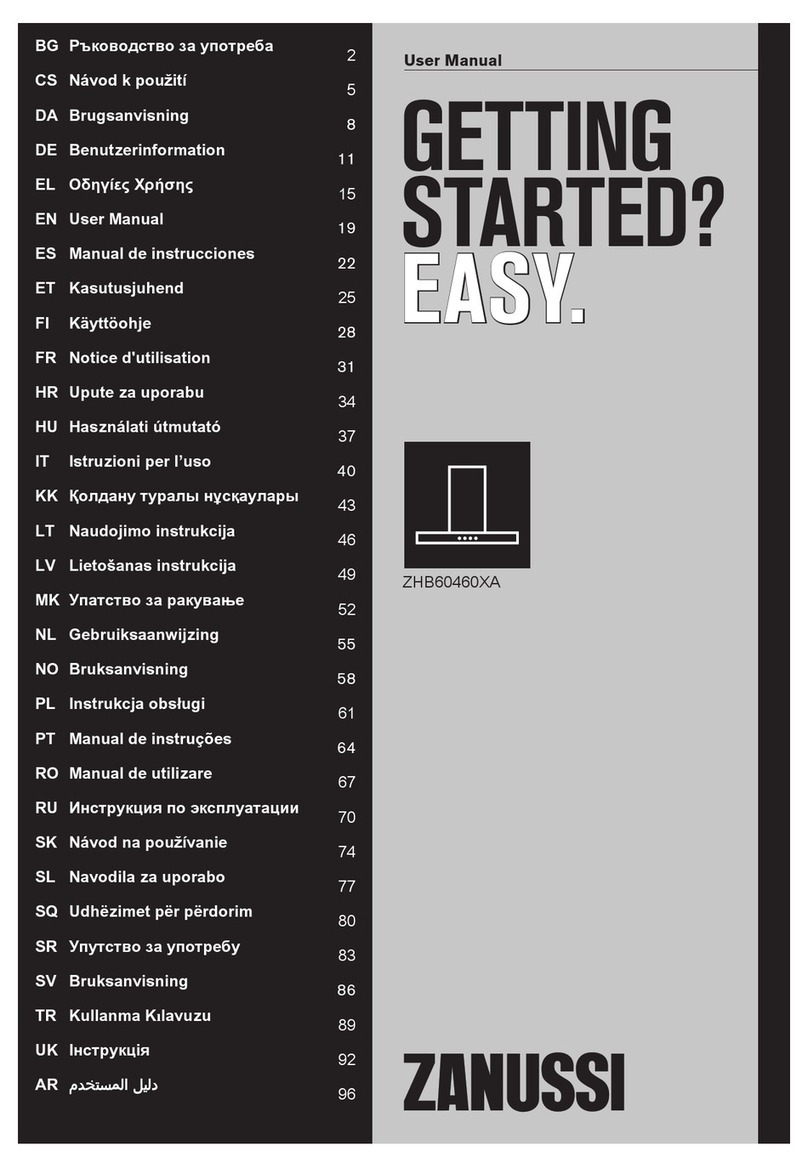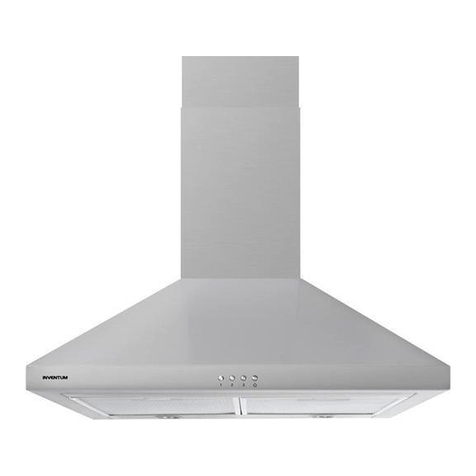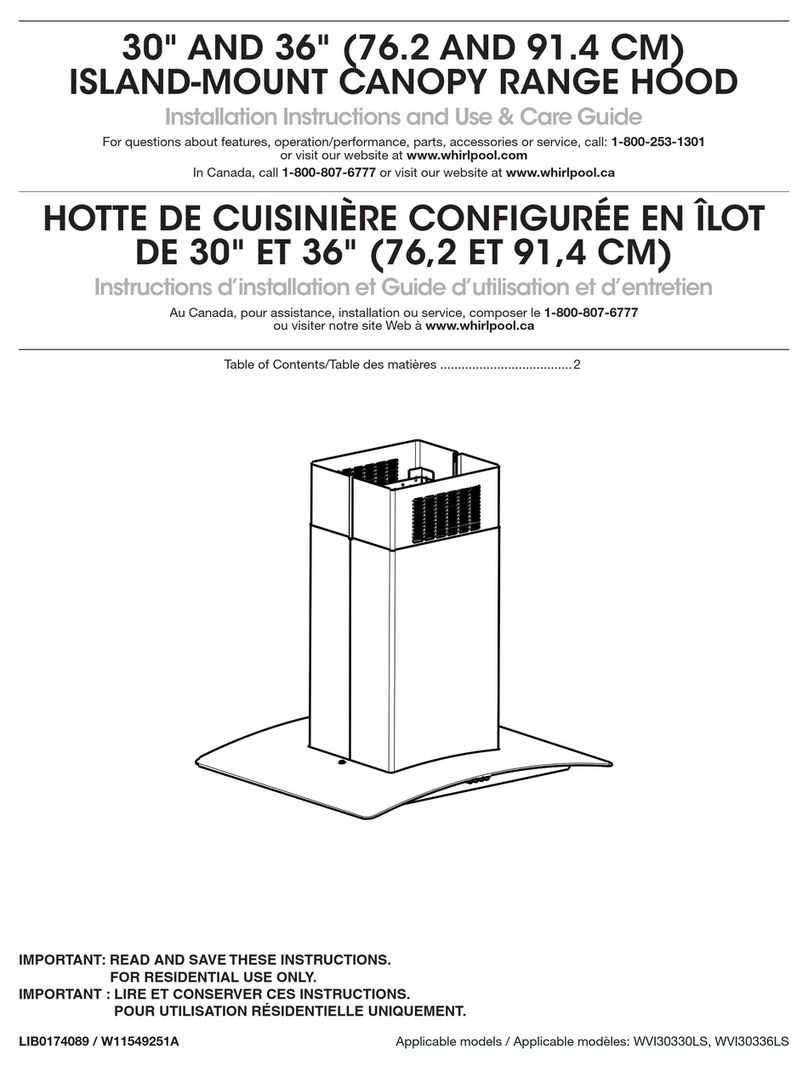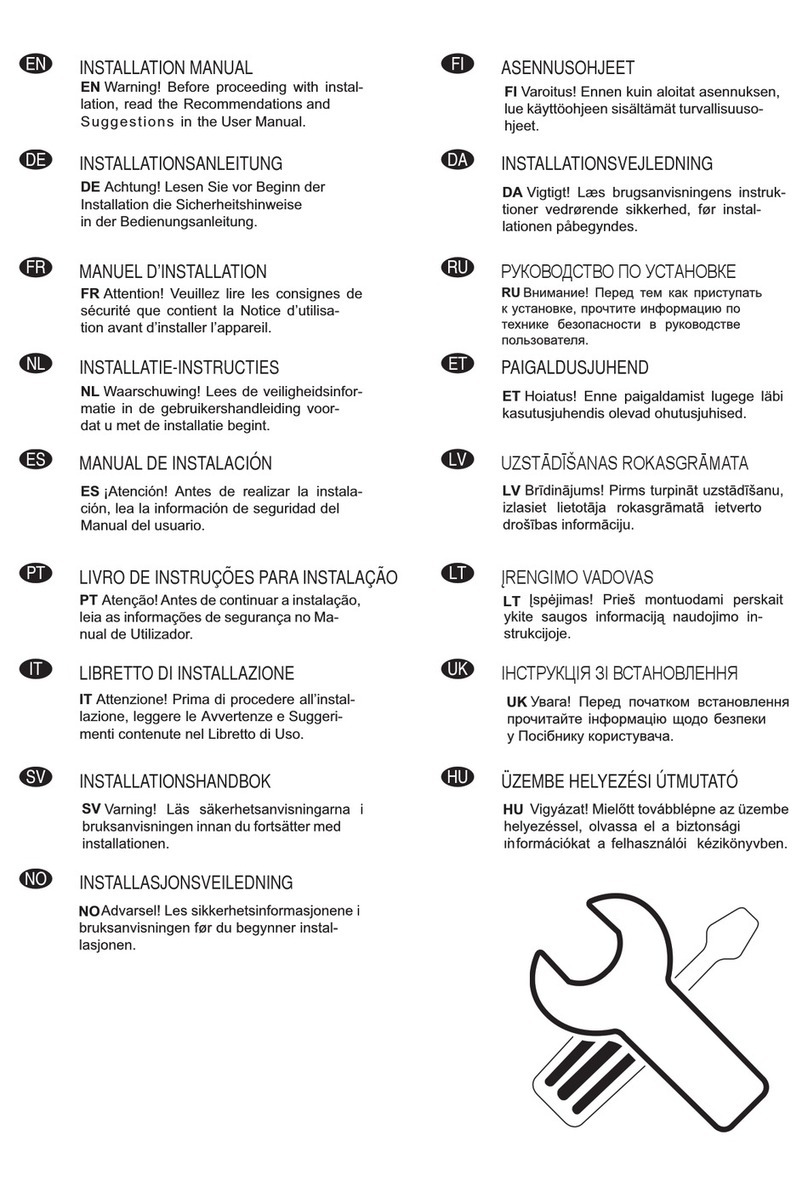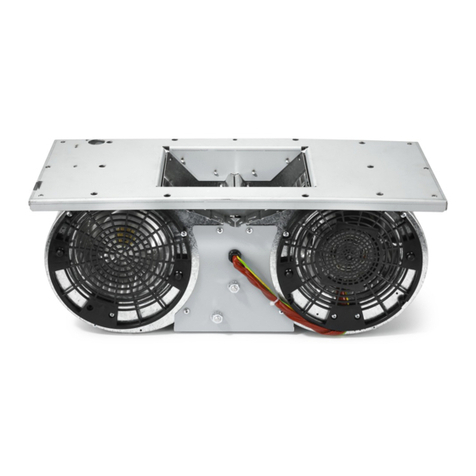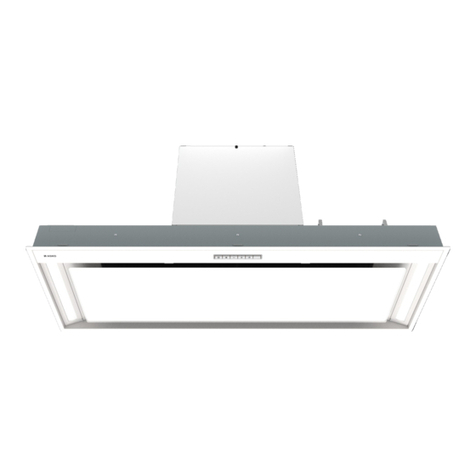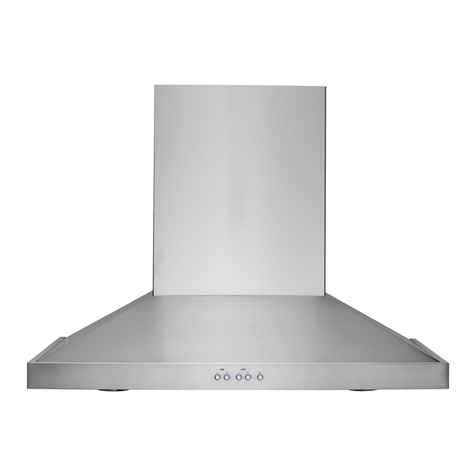Tucker R CLASS Series Assembly instructions

ASSEMBLY, INSTALLATION
AND OPERATING INSTRUCTIONS
ROASTING HOOD
FOR R CLASS BBQ SERIES
R CLASS MODELS:
1R, 2R, 3R, 4R, 5R, 6R.
1RS, 2RS, 3RS, 4RS, 5RS.
1RSS, 2RSS, 3RSS, 4RSS, 5RSS.
V6, V8, V10, V12, V8SS, V10SS
IMPORTANT – PLEASE READ ALL
INSTRUCTIONS BEFORE YOU ASSEMBLE,
INSTALL OR OPERATE THIS APPLIANCE. V03.01.20


1
GENERAL WARNINGS
ROASTING HOOD ASSEMBLY INSTRUCTIONS
INSTALLATION INSTRUCTIONS & WARNINGS
DIMENSIONS
OPERATING INSTRUCTIONS
COOKING HINTS & MAINTENANCE
WARRANTY
2
3
6
8
9
13
14
CONTENTS

2
IMPORTANT SAFETY
INSTRUCTIONS
• Tucker R Class BBQs are approved for outdoor
use only.
• Save this manual for future reference.
• The maximum cooking temperature is 200’c.
• The roasting hood is hot while in use, keep
children well away.
• Always attend the barbecue while it is in
operation.
• Regular cleaning is essential.
• Grease or fat res are not covered by warranty.
• When not in use the roasting hood should be left
shut.
• An optional canvas cover will protect your
appliance from the weather.
WARNING FOR
YOUR SAFETY
If you smell gas:
1. Shut off gas supply to appliance.
2. Extinguish any open ame.
3. Open lid or hood.
4. If odour continues, immediately call your gas
supplier or your Fire Department.
HAZARDOUS FIRE OR EXPLOSION MAY RESULT
IF INSTRUCTIONS ARE IGNORED.
CAUTION: ELECTRICAL WARNING
It is the consumer’s responsibility to see that the
barbecue is properly assembled, installed and
taken care of. Failure to follow the instructions in this
manual could result in serious bodily injury and /or
property damage.
If your barbecue incorporates an electrical
component, such as a rotisserie or light, then it must
be electrically grounded in accordance with local
codes. The electric cord must be equipped with a
three-prong (grounding) plug for your protection
against shock hazard and should be plugged
directly into a properly grounded three-prong
receptacle. Do not cut or remove the grounding
prong from this plug. Keep any electrical supply
cord and fuel supply hose away from any heated
surfaces.
ROASTING HOODS ARE AN OPTIONAL ACCESSORY
TO YOUR BARBECUE, PLEASE READ THIS MANUAL IN
CONJUNCTION WITH THE TUCKER R CLASS BARBECUE
INSTRUCTION MANUAL.

1x
Roasting Hood body
1x
Roasting Hood Handle
1x
Roasting Hood Rear Cooking Shelf
1x
Roasting Rack
1x
Roasting Pan
3
ROASTING HOOD ASSEMBLY
INSTRUCTIONS
Phillips head screwdriver
TOOLS REQUIRED FOR ASSEMBLY
Check you have all the correct components as
listed below.
Make sure to read any separate instructions on Assembly, Installation and Operation of the R Class
Barbecue and / or Wok Burner if they are to be tted to the BBQ.
2x Bolts
ROASTING HOOD PARTS LIST

4
3. Place the roasting hood on top of the barbecue.
4. The lugs on the base of the hood slot into the
surrounding edges of the barbecue.
1. Remove any packaging, cable ties and
components from inside the Hood. You should
have a Rear Cooking Shelf, Roasting Rack,
Roasting Pan and Handle for the Roasting Hood
inside.
2. First attach the Handle onto the front of the
Roasting Hood with the bolts provided.
5. Place the rear-cooking shelf onto the brackets
in the rear section of the hood.
The base of the Roasting Hood has 4 x locating
tags that t into corresponding slots on the top of
the BBQ.
The lugs on the front of the hood must slot into
the barbecue before the lugs on the rear.
The rear-cooking shelf can be stored upright in
the rear of the hood.
The roasting rack and baking dish can be stored
away until needed for roasting.

5
Tucker R Class Roasting Hoods are designed to
be installed onto Tucker R Class Barbecues.
• This appliance must be installed outdoors.
• Be mindful of the location of installation of the
BBQ. It is better that the prevailing wind blows
into the front of the BBQ during cooking as strong
winds blowing into the back or across the back
of the hood whilst cooking with the hood closed
can cause overheating of the BBQ. This is due
to all the hot air retained in the hood during
cooking not being able to be released naturally
from the rear vent of the hood in strong winds.
• If the BBQ is installed within a Tucker Cabinet
Trolley the clearance to combustibles is zero on
the sides and rear and 800mm from the top.
• The minimum clearance to combustibles is as
follows if you are building the BBQ in without a
Tucker Cabinet Trolley.
• Minimum 100 mm clearance to combustibles on
the rear.
• Minimum 100 mm clearance on the sides and
800 mm top clearance.
• Do not install this appliance indoors or on marine
craft.
• Do not obstruct any of the air ventilation
openings under or around the sides of the
barbecue.

6
INSTALLATION INSTRUCTIONS
& WARNINGS
BARBECUE INSTALLATION INSTRUCTIONS
INSTALLATION WARNINGS
READ THE IMPORTANT INFORMATION
ON THE FRONT OF THE BARBECUE.
HAZARDOUS FIRE OR EXPLOSION MAY RESULT IF
INSTRUCTIONS ARE IGNORED.
It is the consumer’s responsibility to see that the
barbecue and hood are properly assembled,
installed and taken care of.
Failure to follow instructions in this manual could
result in injury and/or property damage.
This barbecue is designed and approved for outdoor
use only.
Be mindful of the location of the installation of the
barbecue.
When using the roasting hood it is better that the
prevailing wind blows into the front of the BBQ
during cooking.
Do not use this appliance indoors or on marine craft.
This appliance shall only be used in an above
ground, open-air situation with natural ventilation,
without stagnant areas where gas leakage and
products of combustion are rapidly dispersed by
wind and natural convection.
Any enclosure in which the appliance is used shall
comply with one of the following:
• An enclosure with walls on all sides, but at least
one permanent opening at ground level and no
overhead cover. (gure 1)
• Within a partial enclosure that includes an
overhead enclosure and no more than two walls.
(gure 2 and 3)
IMPORTANT
Strong winds blowing into the back or across
the back of the hood whilst cooking with the
hood closed can cause overheating of the
BBQ. The Roasting Hood is designed so that Hot
air from inside the Roasting Hood is released
through the vent in the top of the Roasting
Hood when it is shut while roasting.
Strong winds can prevent the hot air escaping
out of this vent and may even in some cases
push the hot air down and out the front of the
base of the BBQ Fascia where the cold fresh air
is designed to enter the BBQ Body.
This choice of installation can cause the front of
the BBQ to get unusually hot and can damage
the ignition system and control valves.
The intended use of this barbecue is to be
installed onto a Tucker R Class Cabinet Trolley.
Be sensible about the location of your
barbecue.
The barbecue must be located on a solid and
level surface that can safely support the BBQ.
The Cabinet Trolley is tted with lockable
Stainless Steel Castors, when you have your BBQ
installed into position, the brakes on the Castors
must be locked to avoid the Cabinet Trolley
from moving during use.
Do not locate the barbecue near combustible
materials or surfaces, either above or around
the barbecue such as overhanging trees,
bushes or ammable liquids and the like.
Do not obstruct any of the air ventilation
openings on the front of the barbecue.
If your barbecue incorporates an electrical
component, such as a rotisserie or light, then it
must be electrically grounded in accordance
with local codes.
The electric cord must be equipped with
a three-prong (grounding) plug for your
protection against shock hazard and should
be plugged directly into a properly grounded
three-prong receptacle. Do not cut or remove
the grounding prong from this plug.
Keep any electrical supply cord and fuel supply
hose away from any heated surfaces.

7
DIAGRAMMATICAL REPRESENTATIONS OF
OUTDOOR AREAS
The following gures are diagrammatical
representations of outdoor areas. The areas used in
the gures below are examples – the same principles
apply to any other shaped area.
FIGURE F1 – OUTDOOR AREA – EXAMPLE 1
FIGURE F2 – OUTDOOR AREA – EXAMPLE 2
FIGURE F3 – OUTDOOR AREA – EXAMPLE 3
Both ends open
• Within a partial enclosure that includes an
overhead cover and more than two walls, the
following shall apply. (gures 4 and 5)
• At least 25% of the total wall area is completely
open.
• At least 30% of the remaining wall area is open
and unrestricted.
• In the case of balconies, at least 20% of the total
of the side, back and front wall areas shall be
and remain open and unrestricted.
FIGURE 4 OUTDOOR AREA –EXAMPLE 4
FIGURE F5 – OUTDOOR AREA – EXAMPLE 5
Open side at least 25%
of total wall area
30% or more in total
of the remaining wall
area is open and
unrestricted.
OPEN AT SIDE AT LEAST 25% OF TOTAL WALL AREA. 30% OR
MORE IN TOTAL OF THE REMAINING WALL AREA IS OPEN
AND UNRESTRICTED.
OPEN SIDE AT LEAST 25% OF TOTAL WALL AREA. 30% OR
MORE IN TOTAL OF THE REMAINING WALL AREA IS OPEN
AND UNRESTRICTED.
Open side at least 25%
of total wall area
30% or more in total
of the remaining wall
area is open and
unrestricted.

8
DIMENSIONS OF R CLASS ROASTING HOOD
(Measurements are in mm)
DIMENSIONS
R Class SS
Wok Hood R CLass V6 R Class V8 R Class V10 R Class V12
A400 695 855 1015 1435
285mm
A
600mm80mm
510mm 560mm

9
OPERATING INSTRUCTIONS
ROASTING HOOD ROAST RACK AND BAKING DISH
1. Always open the hood before lighting the
barbecue.
2. Use the burners on high to reach180OC - 200OC
with the hood closed to pre-heat the barbecue.
3. Run the barbecue for 2-3 minutes on high with
the hood closed to warm it up.
4. Then turn the burners down a little to maintain
between 180OC - 200OC.
5. This will provide you with the optimum
temperature for roasting.
6. For barbecuing the temperature is much the
same although it depends on the way you like to
cook, slowly or fast.
7. Apply a light coating of cooking oil over the
surface of the plate and grills to help stop food
from sticking to them.
8. The maximum recommended temperature for
roasting is 200OC.
• Without the water the tray will get very hot and
buckle and the fat will hiss and spit.
• The tray also protects the roast from direct
heat and are from oil dripping on the tiles and
burning the roast.
• Put your meat /sh/poultry to be roasted on the
roast rack.
• The ideal temperature to roast is 180OC-200OC.
• Check your roast regularly and top up the water
in the baking dish as it will slowly evaporate over
time as it boils.
When your roast is half cooked, turn it over so as to
brown the roast evenly on both sides.
At this time you can put your vegetables up on the
rear-cooking shelf either in another baking dish or just
on the shelf to roast them above the grill.
• The roasting rack is designed for roasting.
• Place the roast rack on the cooking surface.
• Place the baking dish lled with water under the
roast rack.
• The water keeps the roast moist while cooking
and collects oil and marinade that drips off the
roasting meat.
Cooking times can vary slighty depending on
weather conditions but generally cooking times
should be similar to regular oven times at the
same temperatures.
Allow 1 hour per kilo of meat. A standard size
family roast will take approximately 2-3 hours,
(the slower the better).
Cold and windy conditions can affect roasting
hood temperatures.
Do not run the barbecues on high for long
periods unless you are cooking.
If the barbecue burners should go out due to
strong winds, care should be taken.
Open the hood remove the barbecue drip tray
and wait 1 minute before re-lighting to let any
gas disperse.
All surfaces of the roasting hood are hot; Do not
touch any part of the hood except the handle.

10
HANDY HINTS
REAR-COOKING SHELF
• The roast vegetables will require turning every 10
minutes, as they can stick to the baking dish.
• Only lightly baste the vegetables, as oil is highly
ammable.
• Use baking paper under the vegetables to stop
them sticking.
• You can make tasty gravy from the reduced
water in the baking dish with the addition of a
stock cube and a little our or cornour.
• The area above the open grill is as hot as the
area below.
• You can grill any meat up on the cooking shelf.
• The chance of are up is decreased, as the
distance from the ceramic tiles is further away.
• This makes it ideal for fatty meat like sausages,
lamb chops, pork chops, ribs, chicken wings and
legs, satays.
• The area above the solid hot plate is used for
keeping food hot that is already cooked or as
an area to warm buns or hold food from cooking
any faster than you require.
• The area above the open grill can also be used
when roasting vegetables or small roasts or racks
of lamb.
• The rear cooking shelf can be adjusted forwards
or backwards to give you better stability when
using large pans or big pieces of meat and sh
on it.
• When not required the rear cooking shelf can
also be stored away upright inside the rear of the
hood or when roasting or using the rotisserie as
the photo below shows.
The rear-cooking shelf is used for extra cooking
space inside the hood as well as a warming space.

11
OPTIONAL ROTTISERIE ASSEMBLY
INSTRUCTIONS
The roasting hood must be fully assembled before
you install the rotisserie kit.
1. Open the hood.
2. Attach the rotisserie motor bracket to the left
hand side of the hood using the nuts and bolts
provided.
3. Slide the motor down over the bracket.
4. Skewer the meat over the rod and fasten it
rmly with the prongs supplied. Slide the counter
weight onto the skewer rod.
5. Push the rotisserie rod into the hole in the motor
and locate the other end into the slot in the
hood.
6. Make sure the meat is centered on the skewer
rod as slipping meat will strain the motor and
wear the gearing causing the motor to fail.
7. The counter weight can help ease the strain on
the motor by positioning it opposite the heavy
side of the meat and adjusting the weight.
A baking dish lled with water centered under the
meat will help avoid unnecessary are-ups.

12
NEW BBQ ‘BURNING IN’ PROCESS
PRE-HEATING THE BBQ BEFORE COOKING
Open the Roasting Hood for this process.
1. Brush a very light coating of cooking oil over the
surface of the Cooking Grills and Solid Hot Plate.
2. Turn all Burners onto low and run the BBQ for
5 minutes than turn it off.
3. When its cool rub the entire surface of the Plate
and Grills again with a light coating of oil.
4. This will protect them from surface rust as moisture
in the air can cause surface rusting.
5. Close the Roasting Hood when you have nished
oiling.
1. Brush a very light coating of cooking oil over the
plate or grill prior to lighting.
2. Preheat the BBQ on high for 2-3 minutes.
3. We recommend you cook on the Medium setting
as you will have sufcient heat to Grill or Roast.
4. If more heat is required, you can turn it up a little
if need be.
5. Flare up will occur if the cooking surface gets too
hot.
6. The recommended cooking temperature inside
the Roasting Hood is 180OC, never exceed 200OC
with the Roasting Hood closed.
If you notice smoke rising up off the surface of
the BBQ, turn the burners down to low as the
oil will start to burn and if left on high for much
longer the oil could catch on re if it reaches its
ignition point.

13
COOKING HINTS
& MAINTENANCE
CLEAN UP AND MAINTENANCE
AFTER INSTALLATION
EVERYDAY CLEAN UP
Flare ups will occur if the cooking surface gets too
hot, the recommended cooking temperature is 180
degrees with a Roasting Hood closed.
If are ups occur turn the BBQ down and the are will
subside as the temperature will decrease.
Always turn the meat with tongs, a fork will pierce the
sealed surface and let out the juices.
A few green gum leaves placed onto the cooking
grill or hot plate will give an Aussie bush avour to
your meat or vegetables.
Don’t slash the steaks to see if they are cooked, press
the steak on the top if its soft it is rare, if it is slightly
springy it’s medium rare, less springy medium and
when rm its well done.
If time permits marinade the meat for added avour
and tenderness. A basic wine, herb, onion and garlic
marinade is ne.
Fruit and vegetable accompaniments can be
cooked alongside meat or grilled in a Wok on the
Wok burner. Some are best wrapped in foil to retain
juices or you can place them on skewers.
Go easy on sugar and honey in marinades and
basting sauces as very sweet mixtures tend to scorch
easily.
Grilling the perfect steak requires the grill to be
per-heated well so that the grill is hot, this whey when
you place your steak on the grill it will sear the meat
quickly on the outside of the steak, it is best to turn
the steaks over often, say every 20- 30 seconds as
this will ensure the meats fat and enzymes are evenly
cooked, you may like to cook your steaks until the
blood shows through them before you turn them
but you will not be able to cook rare or medium rare
steaks this way as they will start to overcook in this
manner.
Place sausages on the grill or plate and turn them
frequently to brown the surface evenly. Be careful
not to use to much heat as sausages contain a lot of
fatty oil which will cause the ame to are up burning
the outside of the sausage when cooked over the
open grill.
Bacon, eggs, mushrooms, tomatoes and onions are
best cooked on the plate you can toast buns or
bread on the open grill.
Fish, can be cooked on the plate with our and
herbs or wrapped in foil to seal in the juices on the
grill.
Cooking times for sh vary as to the type and thick-
ness of them generally times are a lot shorter than
meat.
1. Wash the roasting hood regularly with hot soapy
water and a soft cloth.
2. Rinse well and wipe the surface dry before storing
or covering.
3. For stubborn stains and grease build up, scotch
bright pads or stainless steel wool can be used,
but try to avoid using these heavy abrasives, as
they will leave scratch marks on
the stainless steel.
If used rub with the grain of the stainless steel to
avoid obvious scratching.
4. Do not use steel wool, as this will leave steel
granules on the surface of the stainless steel that
will cause surface rust.
5. To remove surface rust marks we recommend
Eagle One, NEVER DULL wadding polish. To
prevent rust marks polish the barbecue with
stainless steel polish regularly
6. Stainless Steel barbecues can be affected
by high temperatures of which can cause
discoloration on the barbecue and roasting
hood.
7. Check and tighten bolts on the hood handle
periodically
8. A canvas cover will help keep your barbecue
protected from weather. Make sure the
barbecue is dry before putting the cover on
or corrosion may occur. Coastal climates are
particularly vulnerable to this.
COOKING HINTS
• Remove greasy nger prints etc. from the
barbecue hood after assembly. Stainless steel
polish or a little cooking oil with a soft cloth works
well.
• The polish or oil will protect the stainless steel from
dust and salt spray settling on the stainless steel.
• Salt spray, dirt and grime can cause tea staining
on stainless steel, a weather proof cover is
recommended to keep your barbecue clean
and reduce tea staining especially in coastal
areas.

14
WARRANTY
TUCKER R CLASS ROASTING HOOD
WARRANTY
WARRANTY PERIOD
NOT COVERED
CONDITIONS OF THIS WARRANTY
Stainless steel body
Rear Cooking Shelf
Roast Rack
All other parts
10 years
2 years
2 years
1 year
The warranty does not cover the purchaser or any
other person for damage malfunction or loss due to
the following:
• Lack of maintenance, abuse, neglect, misuse,
accident, or improper installation of this
appliance.
• Scratches, dents or discoloration caused by heat,
abrasive or chemical cleaners.
• Damage due to grease or fat res.
• Surface rust.
• Cleaning and normal wear and tear.
• Unauthorized repairs during the warranty period.
• Removal or re-installation costs.
SERVICE CALLS OF THE ABOVE NATURE ARE
CHARGEABLE
1. The appliance is delivered to TUCKER AUSTRALIA
distributors service department or authorized
service agent and freight charges both ways is to
be paid by the owner. No liability is accepted for
loss or damage during transit.
2. The appliance is installed by a qualied person
and operated and maintained in accordance
with the instructions supplied. Repairs and service
must be carried out by an authorized person.
3. Installation must conform to the standards laid
down by the local codes or, in the absence
of local codes, with AGA code AG:601
AS:5601:2002
4. No alterations or repairs are to be carried out
without obtaining the distributors prior consent.
Such repair or any replacement does not extend
the warranty period.
5. Proof of purchase together with this warranty
must be provided to verify purchase date and
establish the warranty period. Only the original
purchaser is covered under this warranty.
6. Where this warranty is inconsistent with any state
laws, the rights of the purchaser shall prevail.
7. Parts installed from other manufacturer’s
products will nullify this warranty.
FOR SERVICE OR REPLACEMENT PARTS,
CONTACT YOUR NEAREST DEALER OR
TUCKER AUSTRALIA PTY LTD.
FOR YOUR RECORDS
Model:
Serial Number:
Retailer:
Purchase Date:
Gas type:
TUCKER AUSTRALIA PTY LTD.
138 Silverwater Road
Silverwater NSW 2128 AUSTRALIA.
PHONE: (+612) 9748 8368
FAX: (+612) 9748 8138
WEB SITE: www.tuckerbbq.com.au
EMAIL: [email protected]
Other manuals for R CLASS Series
1
This manual suits for next models
22
Table of contents
Popular Ventilation Hood manuals by other brands
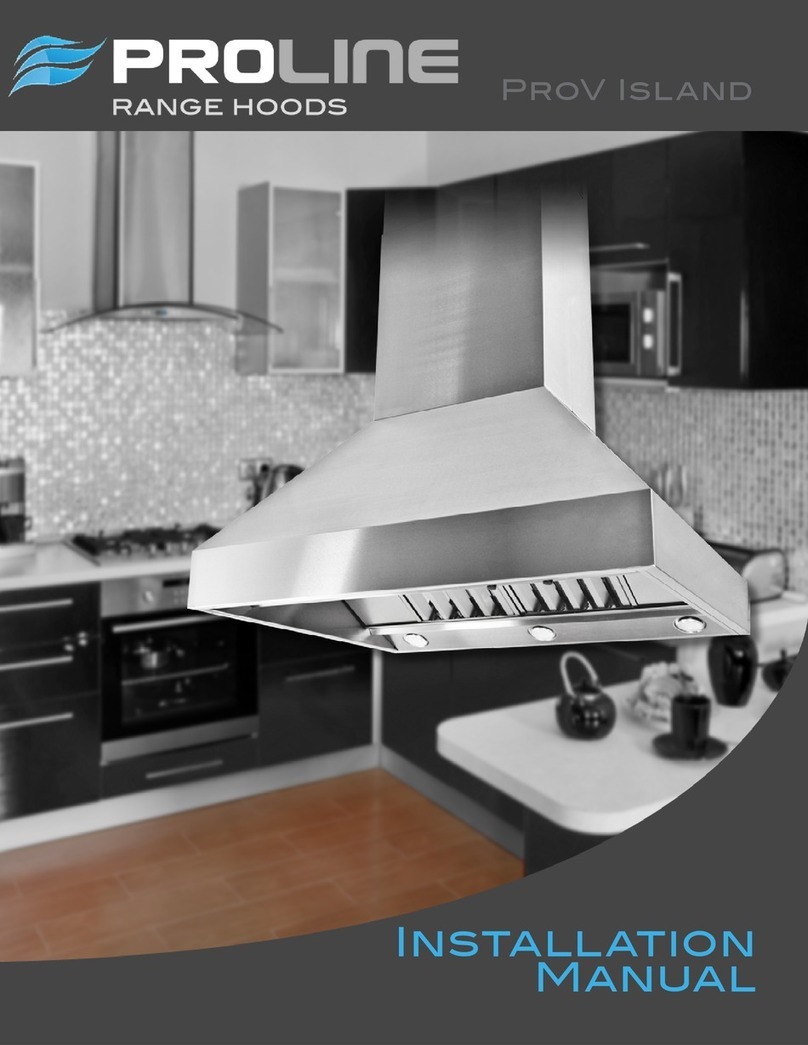
Proline
Proline ProV Island installation manual
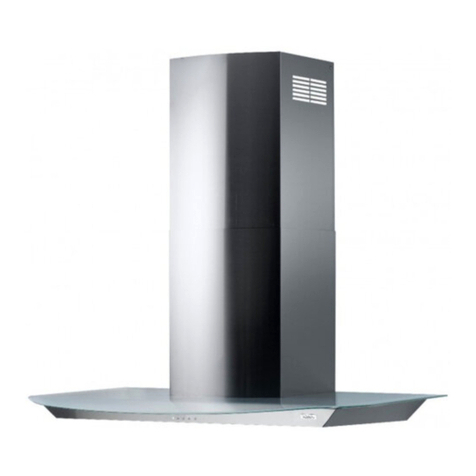
ROBLIN
ROBLIN HELIOS XLS Instructions for installation
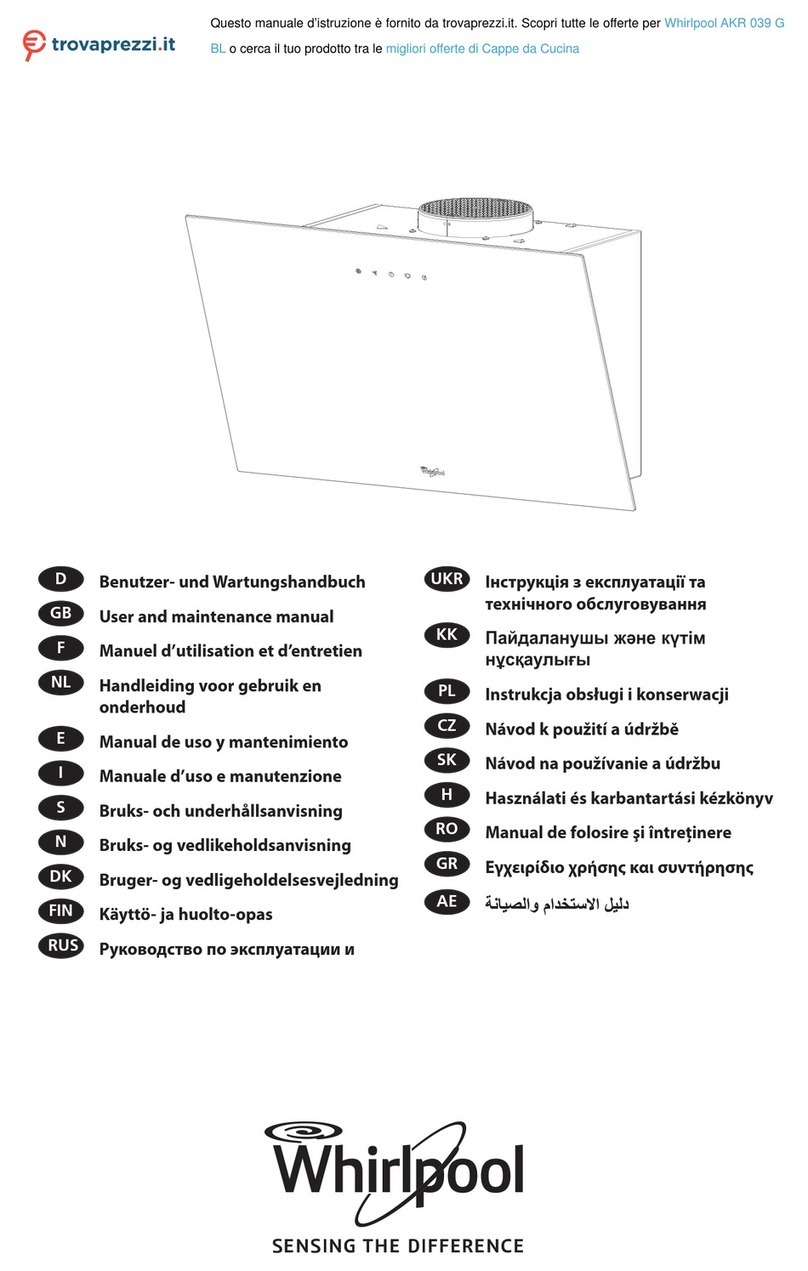
Whirlpool
Whirlpool AKR 039 G BL User and maintenance manual

Smeg
Smeg SET160X Instructions for use

Gaggenau
Gaggenau AW 442 720 installation instructions
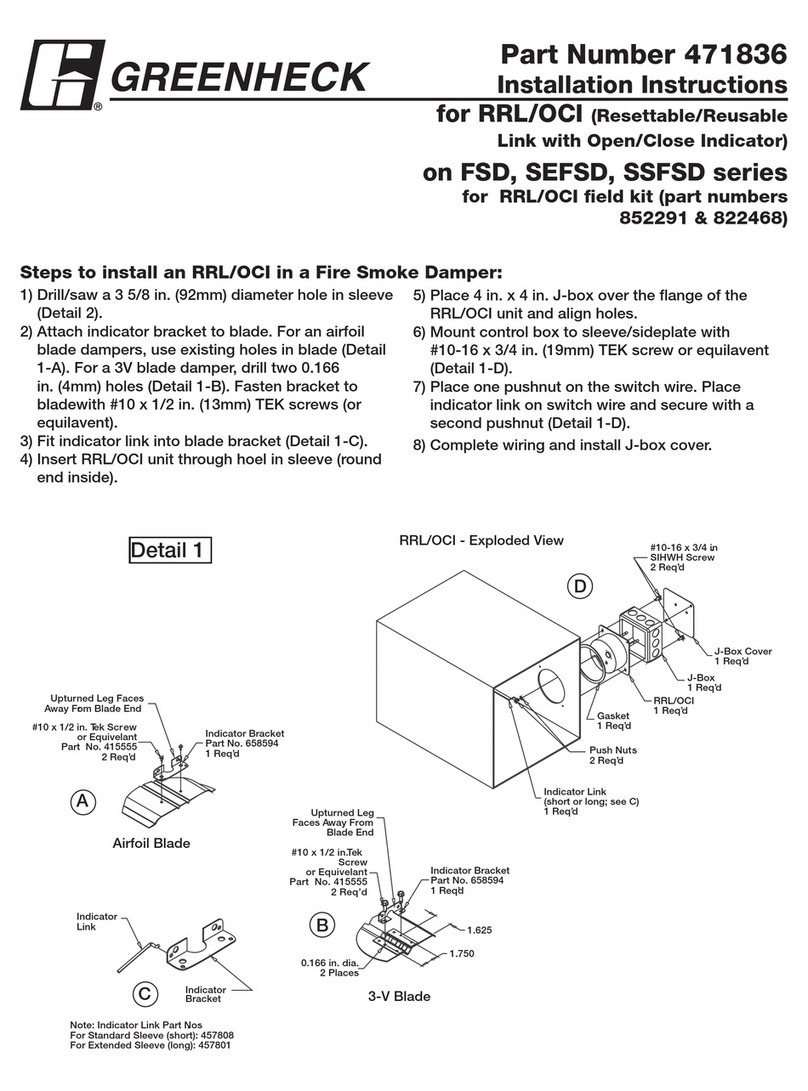
Greenheck
Greenheck SEFSD Series installation instructions
